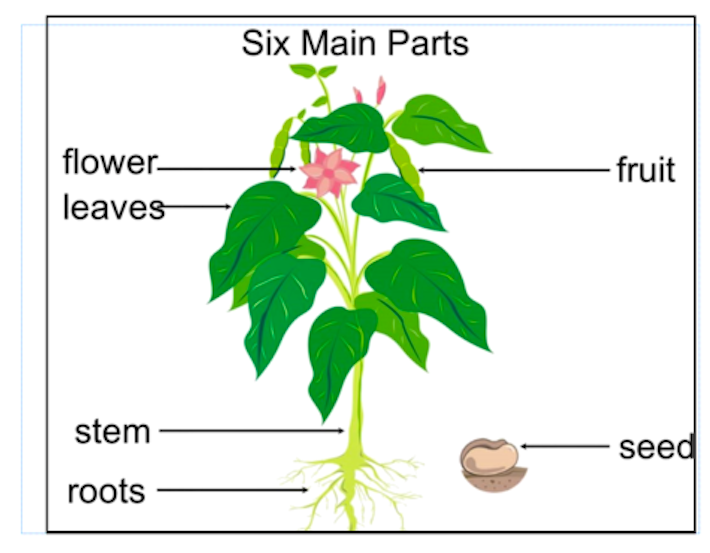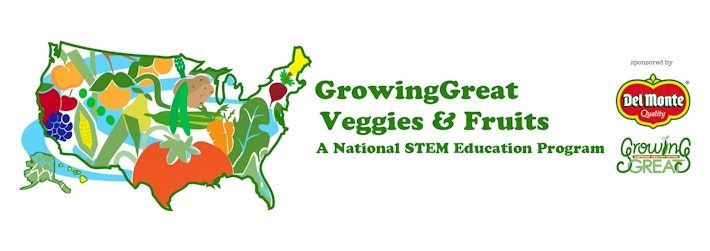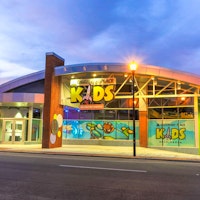I Can Eat the Whole Plant!
Educator Activity: Science and Nutrition Education with GrowingGreat
I Can Eat the Whole Plant!
Discovery Place Kids Huntersville
All plants have the same basic parts—roots, stem, leaves, flowers, seeds and fruit. Did you know the different parts of many plants are edible?
In this activity, children will consider all parts of a plant and how those parts can become the food that they eat. Children will create a visual representation of their favorite foods and sort them into the parts of the plant.
Activity age: PreK
You will need:
- Large size copy paper
- Glue
- Scissors
- Construction paper
- Plant part labels
- Yarn
- Copies of printable worksheets (included below)

Directions (with talking points in italics):
Parts of a Plant
1. Begin by asking children if they think that plants are alive. Get answers from a few children and add information as needed.
Plants are alive and they have the same basic needs as animals (including humans). Food, water, shelter, space and air. Plants also need sunlight because they use the sunlight to make their food.
2. In this activity, children are going to build a model of a plant that shows a plant’s main parts. Give each child a large sheet of white paper, green construction paper, red construction paper (or any color to be the flower petals), yellow construction paper and some pieces of yarn.
We are going to start at the bottom of our plant. Do you know what is at the bottom of a plant? This part of the plant keeps the plant anchored down in the ground and absorbs (takes in) water and nutrients from the soil. It’s the roots!
3. Have children glue strands of yarn to the bottom of their sheet of paper to be the roots of their plants.
Next, we are going to add the part of the plant that acts as the support of the plant. This part of the plant carries the water and nutrients taken in from the roots up into the rest of the plant. It’s the stem!
4. Have children cut a stem out of their construction paper and glue it onto their sheet of paper. Make sure the stem connects to the roots.
Now we’ll add the part of the plant that makes most of the food for the plant (using sunlight and the process of photosynthesis). The leaves!
5. Have children cut out leaves from their construction paper and glue them to their stem.
What part do you think will be at the top of our plant? This part is where the pollen and seeds are made, which is how more plants will be able to grow. It’s a flower!
6. Have children cut out flower pieces from their construction paper and glue the flower on to their plant.
Some plants grow something special to protect their seeds. This part could be fleshy (like an apple) or it could be dry (like a nut). It’s fruit! A fruit is the part of a plant that contains the plants seeds. This is why tomatoes are technically fruit.
7. Have children cut additional shapes to add fruit to their plant.
8. Once children have finished adding all the parts to their plant, give them the printable plant parts worksheet. Ask children to cut out the plant part labels and glue them next to the appropriate part of their plant. Review what each plant part does as children label their plant models.
9. When children have completed their plant models, clean up their workspaces and have them place their plant models aside to take home.
Edible Plant Parts
10. Give each child a copy of the printable edible plant parts worksheet. Ask if children if they recognize any of the items on the paper.
Do you know which part of the plant they come from? We’ve looked at lots of different plant parts, but which plant parts are best to grow in our garden?
11. Have children cut out each of the different edible plants and sort them on the worksheet under which category they think each fruit/vegetable is.
12. Have children glue the different fruits and vegetables under the correct category on their worksheet.
Which of these fruits and vegetables do you like? Which ones would you like to grow in your garden?
13. Ask children to draw a star next to the fruits and vegetables they would like to grow in their garden.
14. When children are finished, clean up their workspaces and have them place their worksheets aside to take home.
This activity is a part of Discovery Place’s ongoing grant partnership with Del Monte and GrowingGreat, which empower children to make healthy food choices through hands-on science and nutrition education.

Edible Plant Parts Worksheet
-
PDF




